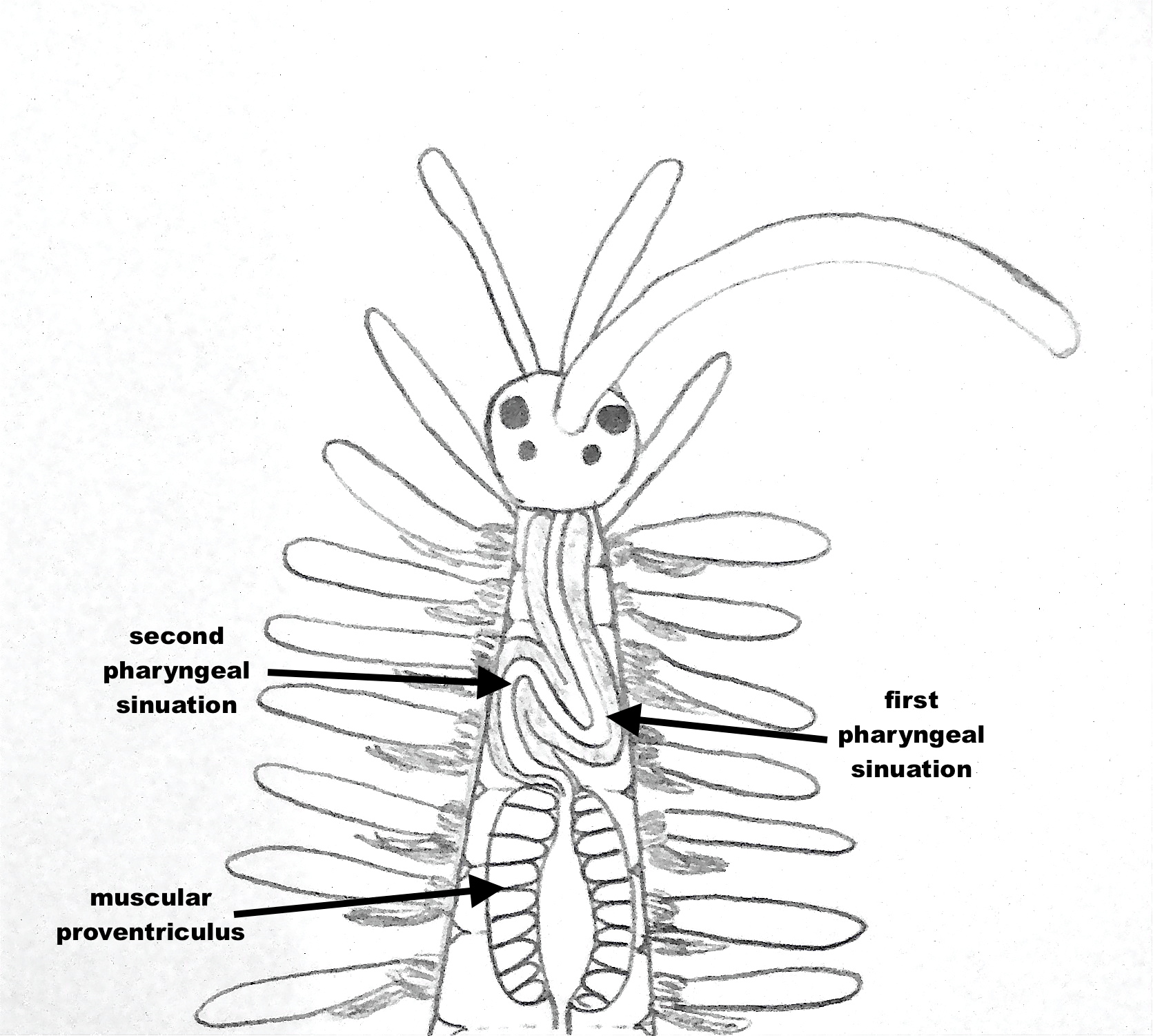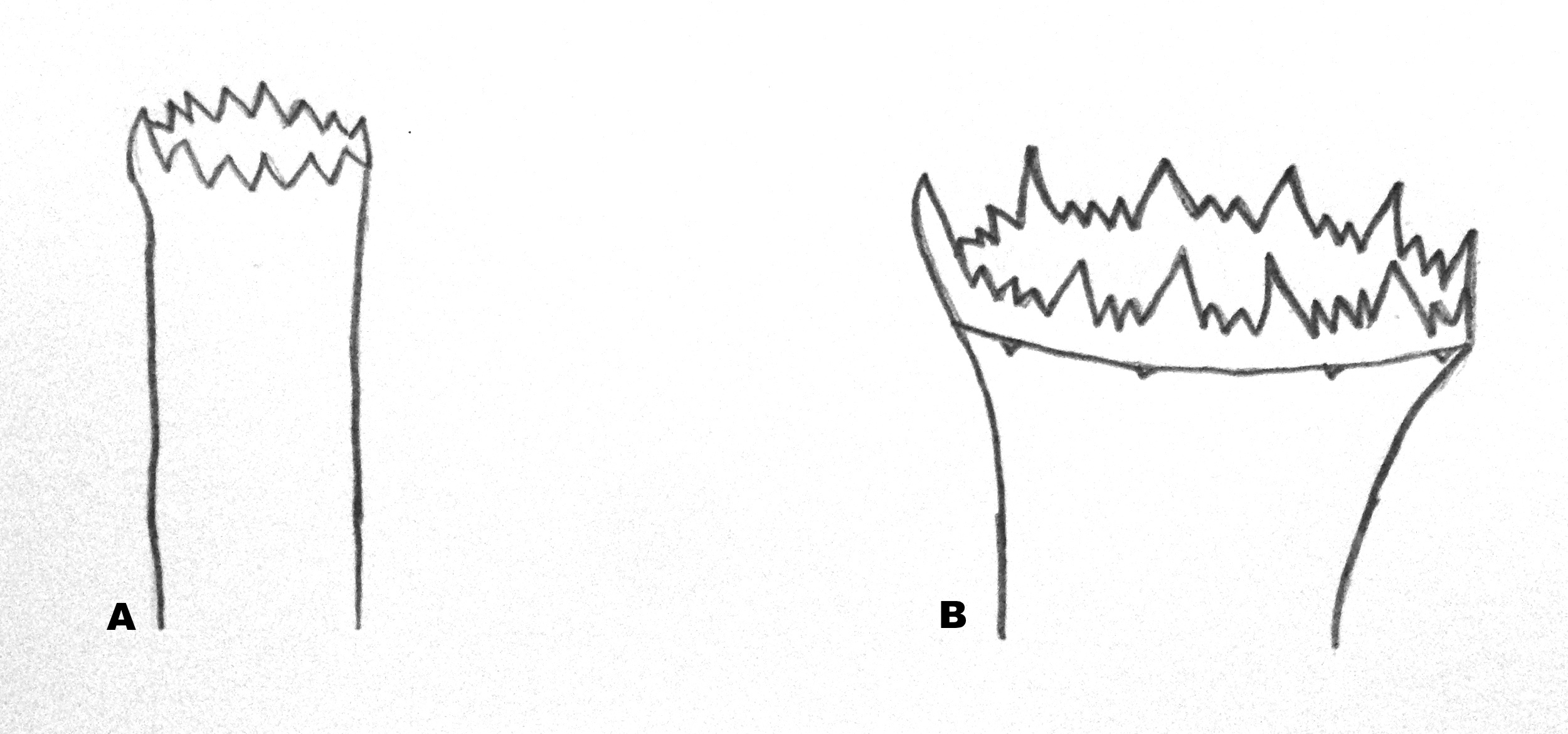Internal Morphology
Two particular aspects of the pharynx enable identification at the sub-family and then at the intra-genus level. The first respective aspect is that of sinuation, or the bending, of the pharynx (Nygren & Sundberg, 2003, Nygren & Pleijel, 2007). All Autolytines (members of the sub-family Autolytinae) exhibit this sinuation, M. pachycera exhibiting one to two bends in its pharynx (Figure 1; Nygren & Pleijel, 2007).

|
|
Figure 1 The possible gut sinuation, or bending, of the pharynx of Myrianida pachycera. Illustration adapted from Dales (1951), as well as information from Nygren & Pleijel (2007).
|
The second respective aspect is that of the Myrianid trepan. The trepan is a component of the eversible pharynx which aids in feeding, and is essentially a ring of chitinous teeth at the end of the proboscis (Figure 2; Aguado et al., 2012). The morphology of the trepan, and the number and size of teeth offer a diagnostic tool (Nygren, 1999; Nygren & Pleijel, 2007). Within the genus Myrianida, only six species exhibit a thin basal ring around the trepan, M. pachycera being one of these six. The trepan of M. pachycera contains 11 large teeth and 26 to 28 small teeth, the large and small teeth alternating in a specific pattern (Figure 2b).

|
Figure 2 A generalised trepan with basal ring absent (A), and the possible dentition pattern of a Myrianida pachycera trepan with basal ring present (B). Illustrations adapted from Nygren (1999; A) and Nygren & Pleijel (2007; B).
|
|
|